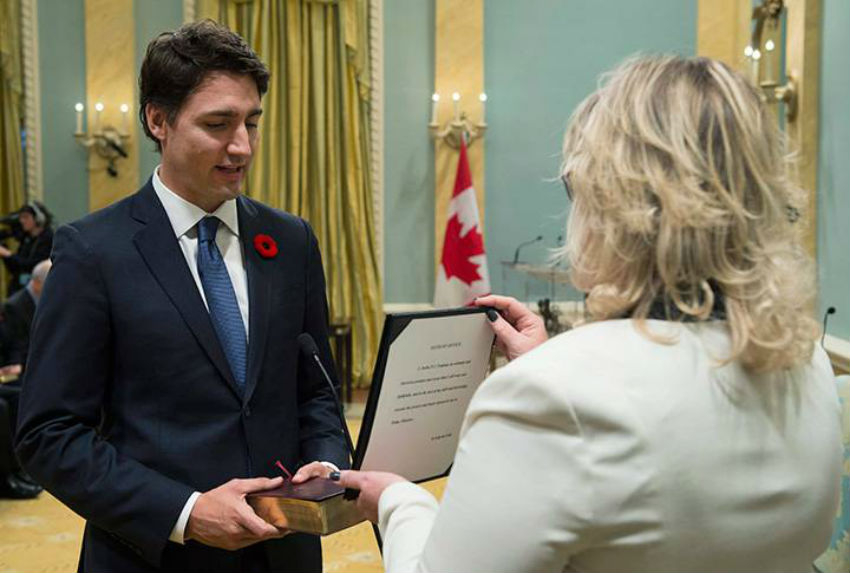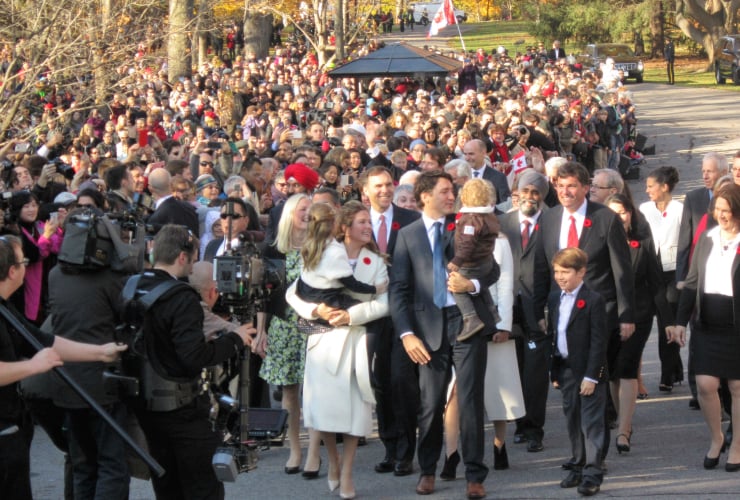No more party of one.
That’s how Peter McKenna, the head of political science at the University of Prince Edward Island, characterized the new cabinet appointed Wednesday.
“Overall, the big news is Mr. Trudeau is clearly signaling to the Canadian public that cabinet government has returned, that this is not the reign of a cabinet of one,” McKenna said.
“This is a cabinet government with ministers of the crown who have real authority, who have real power and are making the decisions. And that’s a stark change from the previous Harper government.”
Justin Trudeau promised gender parity in his new cabinet and he delivered. Fifteen of the 30 cabinet seats went to women. The 23rd prime minister also tried to balance diversity, experience and regional representation in an inclusive cabinet.
“That’s a fairly significant signal that the prime minister wants to include all Canadians, wants to build on the strength and diversity of the people around the table,” opined Pierre Martel, a professor of public administration at the University of Ottawa.
Certainly, it wasn’t a cabinet anyone could have predicted and it came with a number of quirks.

Plenty of surprises in new cabinet
The portfolio of agriculture, traditionally out of western Canada, went to long-time minister Lawrence MacAulay from Prince Edward Island. Fisheries and oceans, normally handed to a West Coast or East Coast minister, went to Hunter Tootoo from Nunavut.
Perhaps it’s a signal that Trudeau plans to shake things up.
A couple of other appointments surprised McKenna: he found former astronaut Marc Garneau’s appointment to transport odd, having expected Garneau to capture the foreign affairs portfolio.
McKenna also cited the appointment of Harjit Singh Sajjan to defence, noting Sajjan’s extensive military background. The Vancouver South MP is a decorated Lt-Colonel and served three tours in Afghanistan.
“That’s an interesting appointment, only in the sense that the rule of thumb is that you tend not to give people portfolios in which they have a certain amount of expertise, direct experience or involvement because you tend to be too close to the file,” McKenna said.
When it came to gender parity, the appointments were not token. Trudeau placed women in a number of senior cabinet portfolios, including justice, international trade, environment and climate change, health, and indigenous and northern affairs.
Lydia Miljan, an associate professor of political science at the University of Windsor, commented that as promised, the cabinet consisted of 50 per cent women.
"Promise made, promise kept,” she said simply.
But she wanted to know if women also hold 50 per cent of the power in the new cabinet, noting that key positions such as finance and defence didn’t go to women. “We think of those as traditionally male portfolios and apparently so does our new prime minister.”
"A competent cabinet"
Martel called it a competent cabinet and said he was struck with the careers and accomplishments of the new ministers, coming from provincial and municipal affairs, the business sector and universities.
“I think we’re going to see a change, certainly in style, in approach, more inclusive, a possibly more open cabinet vis a vis policy formulations,” Martel said.
The political scientist noted one of the first moves he expected from Trudeau and Scott Brison, the new President of the Treasury Board, is to reassure and re-engage the public service.
“It is sad to say, I think the style of the previous government on many of the files and the way they approached the public service created a needless hostility between the political level, the senior public service, and the public service at large,” Martel said.
He noted that Trudeau was likely impatient to get to work on several important files, including the Syria refugees, lowering taxes for the middle class and dealing with the economy.
“Now they have to roll up their sleeves and get to work.”




Comments